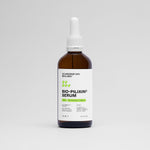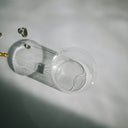Hair transplants have gained immense popularity in recent years as a solution for hair loss, but many prospective patients have concerns about the potential for scarring. Understanding what to expect in terms of hair transplant scars is crucial for anyone considering this procedure. In this article, we will explore the nature of hair transplant scars, their causes, and how they can be managed or minimized.
Table of content
What is a hair transplant scar?
A hair transplant scar is a mark left on the scalp after a hair restoration procedure. There are two primary methods of hair transplantation: Follicular Unit Transplantation (FUT) and Follicular Unit Extraction (FUE). Each method leaves a different type of scar. In FUT, a strip of scalp is removed to harvest hair follicles, resulting in a linear scar at the donor site. In contrast, FUE involves extracting individual hair follicles, which typically results in smaller, dot-like scars scattered across the scalp.
As your leading source for hair health information over the past 4 years, we never compromise on accuracy. When it comes to your health, you deserve information you can truly rely on - and earning your trust is our top priority.
Here's how Scandinavian Biolabs ensures every piece of content meets the highest standards of accuracy and integrity:
- Credentialed Experts: Our reviewers are actively practicing doctors and medical researchers
- Stringent Reviews: Content undergoes rigorous editing by subject specialists and review by a practicing doctor.
- Evidence-Based: We rely on well-established research from trusted scientific sources like peer-reviewed journals and health authorities.
- Full Transparency: Our editorial standards, writer credentials, reviewer credentials, correction process, and funding are all publicly documented.
- Independent Voice: While we do promote products, we operate in a vacuum to business operations. Our main goal is just an unwavering commitment to providing medically-sound guidance.
You can count on Scandinavian Biolabs to consistently deliver the trustworthy health information you deserve. Read our Editorial Standards.
Types of hair transplant scars
1. **FUT Scars**: The linear scar from FUT can vary in length and width depending on the amount of hair harvested and the individual's healing process. This type of scar might be more noticeable, especially with short hairstyles, but it can often be hidden by surrounding hair.
2. **FUE Scars**: The scars from FUE are generally less noticeable than FUT scars, as they appear as tiny dots. However, they can still be visible, especially in individuals with shorter hair or those who have a higher follicle extraction density.
Factors influencing scar formation
Several factors can influence the severity and visibility of hair transplant scars:
- Technique Used: The method of hair transplantation (FUT vs. FUE) plays a significant role in scar formation.
- Surgeon’s Skill: An experienced surgeon can minimize scarring through precise techniques and careful planning.
- Individual Healing: Each person's skin heals differently; some may have more noticeable scars due to their skin type or healing process.
- Post-Operative Care: Following the surgeon's aftercare instructions can significantly impact the appearance of scars.
How to minimize hair transplant scars
While some scarring is inevitable with hair transplants, there are several strategies to minimize their appearance:
- Choose the Right Surgeon: Research and select a board-certified surgeon with a proven track record in hair restoration.
- Consider FUE: If scarring is a primary concern, discuss the FUE method with your surgeon, as it typically results in less visible scars.
- Follow Aftercare Instructions: Adhere to all post-operative care guidelines provided by your surgeon to promote optimal healing.
- Scar Treatment Options: Consult with a dermatologist about treatments such as silicone gel sheets, corticosteroid injections, or laser therapy to reduce scar visibility.
Can hair transplant scars be treated?
Yes, there are several options available for treating hair transplant scars. These treatments can help improve the appearance of scars or even make them less noticeable:
- Topical Treatments: Use of silicone gels or sheets can help flatten and soften scars over time.
- Microneedling: This procedure stimulates collagen production and may improve the texture and appearance of scars.
- Laser Therapy: Laser treatments can help reduce the pigmentation and texture of scars, making them less noticeable.
- Surgical Scar Revision: In more severe cases, a surgical procedure may be performed to excise the scar and close the wound more neatly.
Conclusion
Hair transplant scars are an important consideration for anyone contemplating a hair restoration procedure. Understanding the differences between FUT and FUE scars, the factors that influence their formation, and the various ways to minimize and treat them can empower patients to make informed decisions. With the right approach and care, many individuals can enjoy the benefits of hair restoration while effectively managing the appearance of any resulting scars.
```Tired of Thinning Hair? Try a Clinically Tested Serum.
Looking for a natural way to regrow hair and achieve a thicker, fuller head of hair? Ditch the stinging nettle for hair loss – Bio-Pilixin Serum is a drug-free hair activation serum that delivers clinically tested results.
Here's why Bio-Pilixin is superior:
- Clinically Tested Results: 93% of users saw a reduction in hair loss, and 73% experienced increased hair density.
- Safe and Natural: Unlike harsh chemicals, Bio-Pilixin uses plant growth factors derived from stem cell technology to nourish hair follicles and stimulate growth.
- Fast-Acting: See visible results in as little as 45 days (most typically see results within 150 days).
Stop wasting time on unproven remedies. Bio-Pilixin is the safe & effective serum you've been searching for.
Read more:






